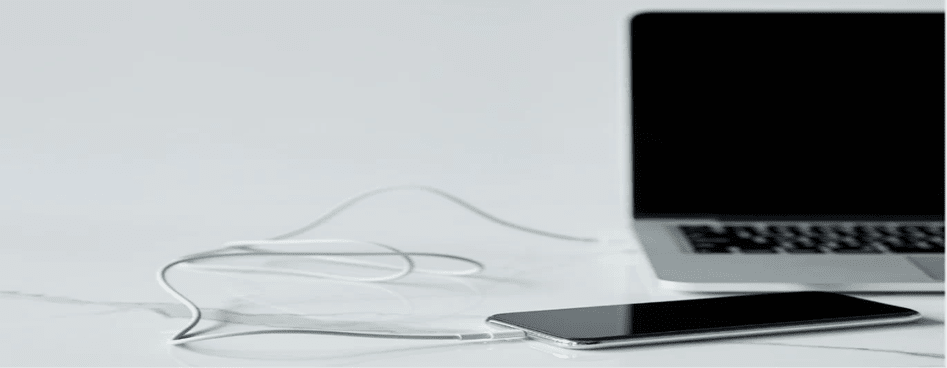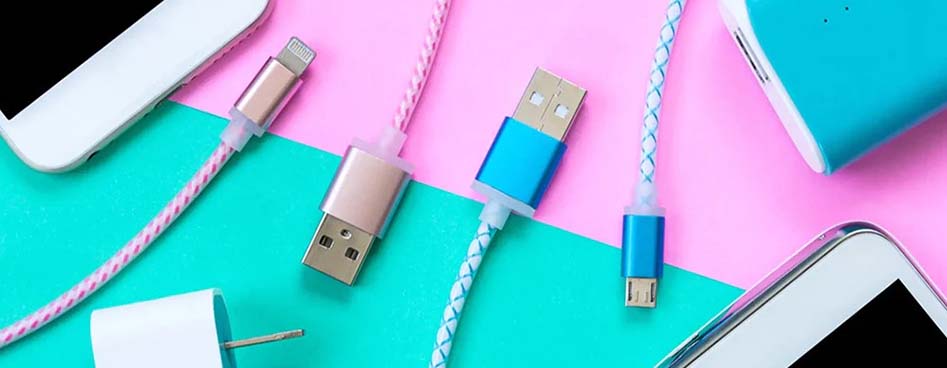In today's digitally connected world, where our smartphones and tablets are our constant companions, we often take the humble charging cable for granted. However, selecting the right charging cable is more important than you might think. It's not just about powering up your device; it's about ensuring its health, performance, and your safety. This comprehensive guide will walk you through the intricacies of choosing the perfect charging cable for your specific device.
Understanding Your Device's Charging Port
To gain a comprehensive understanding of the charging process for your electronic device, it's crucial to begin by exploring the intricacies of your device's charging port. This port serves as the central hub, facilitating the crucial connection between your device and the charging cable. Depending on the make and model of your electronic device, your charging port may be equipped with one of several distinct connectors, each of which has its own unique characteristics. Let's delve into a detailed exploration of these various charging ports:
USB-C: The USB-C port has become a universal standard, known for its reversible design, high data transfer speeds, and capacity to deliver substantial power. Its versatility allows it to be used across a wide range of devices, from smartphones and tablets to laptops and peripherals.
Apple's Lightning Connector: Apple's proprietary Lightning connector is primarily found on their iOS devices. It's known for its compact size, durability, and compatibility with a wide range of Apple products, such as iPhones, iPads, and iPods.
Micro USB Port: The Micro USB port, while older, is still widely used, particularly in a variety of Android devices, Bluetooth speakers, and other gadgets. It is known for its compact design and ease of use.
Each of these ports possesses unique characteristics that can significantly impact your charging experience.
Compatibility Matters: Matching Cable Types to Devices
Understanding the compatibility between your charging cable and your electronic device is a fundamental aspect of maintaining the optimal functioning of your gadgets. The choice of cable is not something to be taken lightly, as using the wrong cable type can lead to a spectrum of issues, ranging from sluggish charging to the potential risk of damage. To help you navigate this critical aspect of device maintenance, it's crucial to acquaint yourself with the various cable types available in the market. We'll break down these different cable types and provide you with a clear and comprehensive guide to ensure that the cable you select perfectly matches your device.
USB-A to USB-C: This cable type is commonly used for charging and data transfer, especially with newer devices. The USB-A end is the traditional rectangular USB connector, while the USB-C end is a smaller, reversible connector known for its fast charging capabilities and widespread compatibility.
USB-A to Micro USB: These cables are frequently found in older devices and are recognizable by the traditional USB-A connector at one end and the smaller Micro USB connector at the other end. They offer reliable connectivity and are still used with a variety of devices like older Android smartphones, gaming controllers, and various accessories.
USB-C to USB-C: This cable type is designed for newer devices that feature USB-C ports at both ends. It's known for its high-speed data transfer, fast charging, and universal compatibility with modern devices like laptops, tablets, and smartphones.
USB-C to Lightning: This cable is designed for Apple devices and combines a USB-C connector on one end with Apple's Lightning connector on the other. It's essential for charging and data transfer between USB-C equipped devices and Apple products like iPhones and iPads.
HDMI, DisplayPort, and More: In addition to charging and data transfer cables, there are specialty cables like HDMI and DisplayPort for video and audio connections, as well as various adapters and converters to connect devices with different ports.
Using a cable that matches your device's port and requirements ensures efficient charging, data transfer, and overall device health.
Quality Over Cost: The Value of High-Quality Cables
Investing in high-quality charging cables transcends mere cost considerations; it's a matter of emphasizing quality over cost. When it comes to selecting charging cables for your electronic devices, making the choice to invest in a high-quality cable can prove to be a transformative decision. It's a move that is often well worth the slightly higher price tag, as these superior cables deliver a range of substantial advantages that can significantly impact your overall device experience.
Here's why quality matters when it comes to charging cables:
Faster Charging: High-quality cables are engineered to provide efficient power delivery, resulting in faster and more effective charging. This means you can get your devices up and running quickly, saving you time and ensuring you're always connected.
Reliable Data Transfer: In addition to charging, quality cables excel in data transfer. They offer stable and consistent connections, reducing the risk of data corruption or interruption when transferring files or syncing your devices.
Enhanced Safety: High-quality cables often incorporate safety features like overcurrent protection and better insulation, reducing the risk of overheating or damage to your device. This safeguards your valuable electronics and your personal safety.
Durability: These cables are built to last, featuring robust construction with reinforced connectors and high-quality materials. They are less prone to wear and tear, which means you won't have to replace them as frequently, ultimately saving you money in the long run.
The value of high-quality charging cables extends far beyond the initial investment. By prioritizing quality, you're ensuring a faster, safer, and more reliable charging and data transfer experience. It's a smart choice that can lead to increased efficiency, the protection of your devices, and long-term cost savings. So, remember, when it comes to charging cables, quality matters more than just the price.
Cable Length: Finding the Right Fit
When it comes to cable length, the decision extends beyond mere convenience; it's fundamentally about ensuring the usability of your electronic devices. The length of your charging cable is a pivotal factor in determining how effectively you can integrate your devices into your daily life. Depending on your unique requirements, you may find yourself in need of a longer cable to accommodate flexibility or a shorter one to reduce clutter and simplify your setup.
Let's delve further into the significance of cable length:
Longer Cables: Longer cables offer flexibility and freedom of movement. They are ideal for situations where your power source is located at a distance from where you intend to use your device. For instance, a longer cable might be indispensable for charging your smartphone while you're using it in bed or on the couch, providing the freedom to move without the fear of disconnecting.
Shorter Cables: Shorter cables are perfect for minimizing clutter and maintaining a neat and organized workspace. In situations where you have limited space or want to eliminate excess cable coiling on your desk, a shorter cable can help streamline your setup, making it more visually appealing and efficient.
Understanding your specific needs and the intended use of the cable is crucial in determining the right cable length for your situation. The perfect cable length will not only enhance your overall user experience but also contribute to the functionality and aesthetics of your workspace or living area. So, when selecting a cable, take into account how the length of the cable can best serve your daily activities and device usage.
Fast Charging Considerations
Fast charging is a highly sought-after feature for many users, but its functionality and requirements might not be entirely clear. To demystify this technology, it's essential to understand how fast charging works and what conditions are necessary for its optimal performance.
Fast charging is a method of replenishing a device's battery at an accelerated rate compared to standard charging methods. It leverages higher power levels to transfer energy more quickly into the battery. Here are some key considerations regarding fast charging:
High-Wattage Chargers: Fast charging typically necessitates a charger with a higher wattage rating. These chargers deliver more power to the device, which allows for faster charging. However, it's important to use a charger that is compatible with your device to ensure safety and efficiency.
Device Compatibility: Not all devices support fast charging. To benefit from this feature, your device must be equipped with the necessary hardware and be compatible with the fast charging protocol, such as Qualcomm Quick Charge, Power Delivery (PD), or proprietary technologies from manufacturers like Samsung (Adaptive Fast Charging) and OnePlus (Warp Charge).
Cable Quality: The quality of your charging cable plays a crucial role in fast charging. High-quality cables with robust connectors and efficient power transmission capabilities are essential for maximizing charging speed. Using a subpar cable can bottleneck the fast charging process.
Optimal Battery Health: Fast charging, while convenient, can generate more heat during the charging process. This can affect battery health over time. To maintain your device's battery longevity, it's recommended to use fast charging sparingly and avoid exposing your device to extreme heat during charging.
Safety Considerations: It's crucial to use certified chargers and cables to ensure safety during fast charging. Non-certified or counterfeit chargers can pose a risk of overheating and damage to your device.
Understanding the principles of fast charging, along with its requirements and potential impacts on your device, is essential for making informed decisions about when and how to utilize this feature. It's a valuable tool for quickly topping up your device's battery, but responsible and informed usage will help ensure the longevity and safety of your electronic gadgets.
Cable Durability and Longevity
Cable durability is a critical consideration when it comes to the longevity and reliability of your charging and data transfer cables. It encompasses a set of factors that are geared towards preventing issues like fraying and damage, which can significantly impact the overall lifespan of your cables. Here's a deeper look into cable durability and its importance:
Preventing Fraying: One of the primary concerns regarding cable durability is preventing the fraying of the cable's outer insulation and the exposure of wires. Fraying typically occurs at the cable's connectors or near stress points, where bending and twisting are frequent. It's a common issue that can lead to reduced functionality or a complete loss of power and data transfer capabilities.
Damage Mitigation: Durable cables are designed to withstand wear and tear, which means they are less likely to suffer damage when subjected to everyday usage. This includes resistance to bending, pulling, and accidental tugging, all of which can strain the internal wires and connectors.
Longevity: The goal of cable durability is to extend the lifespan of your cables. A durable cable can withstand months or even years of use without showing signs of wear and tear. This not only saves you money in the long run but also reduces the environmental impact of disposing of and replacing cables frequently.
Quality Materials: High-quality materials, such as reinforced connectors, robust cable sheathing, and stress-relief features, contribute to cable durability. These materials ensure that your cables can endure the rigors of daily use.
Proper Storage: How you store your cables can also impact their durability. Proper coiling and storage can prevent kinks and twists that weaken cables over time.
Cable durability is not only about saving you money but also about ensuring that your cables are always ready when you need them. Fragile or frayed cables can be frustrating, leading to connectivity issues and potential data loss. By investing in durable cables and taking care of them through proper handling and storage, you can significantly extend their lifespan and reduce the inconvenience of frequent replacements.
Safety First: Avoiding Counterfeit and Low-Quality Cables
Safety is of utmost importance when it comes to charging cables. Ensuring that the cables you use are of high quality and not counterfeit is crucial to prevent a range of potential hazards. Here's why safety should always be a top priority:
Electrical Safety: Low-quality or counterfeit cables may not meet safety standards, potentially leading to electrical hazards, including overheating, short circuits, and even fires. Using certified cables and chargers reduces the risk of such safety issues.
Device Protection: Poor-quality cables can also damage your electronic devices by delivering incorrect voltage or current, which may result in device malfunctions or, in extreme cases, permanent damage. High-quality, certified cables are designed to protect your devices from these risks.
Personal Safety: Using counterfeit or subpar cables may pose risks to personal safety. Overheating, exposed wires, and damaged connectors can lead to electrical shocks or fires, putting your safety at risk. Reliable cables are built with safety features to prevent these hazards.
Data Security: Low-quality cables may compromise the security of data transfers between your device and the connected source. To safeguard your personal and sensitive information, it's crucial to use trustworthy cables that maintain data integrity and security.
Compliance with Standards: Reputable charging cables adhere to industry standards and regulations, ensuring that they are safe for use with your electronic devices. This compliance provides an additional layer of safety assurance.
Long-Term Cost Savings: While high-quality cables may come with a slightly higher upfront cost, they can save you money in the long run by preventing device damage and the need for replacements. Safety is an investment in your devices and your overall well-being.
Prioritizing safety when it comes to your charging cables is essential for the well-being of both your devices and yourself. By avoiding counterfeit and low-quality cables, you can significantly reduce the risks associated with electrical and personal safety, protect your devices from damage, and maintain data security. Make informed choices when selecting your cables to ensure a safe and reliable charging and data transfer experience.
Environmental Responsibility: Eco-Friendly Cable Options
Our responsibility as consumers extends beyond merely selecting cables that fulfill their intended functions. It also includes making environmentally responsible choices. Opting for eco-friendly cable options not only contributes to the well-being of our planet but also reflects a commitment to sustainability and reducing the environmental impact of our technological choices. Here are some reasons why environmental responsibility in cable selection is important:
Reducing Electronic Waste: By choosing eco-friendly cables, we can help reduce electronic waste. Many low-quality or disposable cables end up in landfills, contributing to the growing problem of electronic waste. Eco-friendly cables are designed for durability and longevity, reducing the need for frequent replacements and, in turn, lessening waste.
Energy Efficiency: Some eco-friendly cables are designed to be more energy-efficient, minimizing power loss during charging or data transfer. This can lead to reduced energy consumption and lower environmental impacts over time.
Sustainable Materials: Eco-friendly cables often utilize sustainable materials or recycled components in their construction. These materials are sourced with an emphasis on reducing the environmental footprint and promoting responsible resource management.
Ethical Manufacturing Practices: Some eco-friendly cables are manufactured with a focus on ethical labor practices and environmentally responsible production processes. Supporting such products contributes to a more responsible and sustainable supply chain.
Reducing Carbon Footprint: Making eco-friendly choices, such as using cables with reduced packaging or those made with fewer harmful chemicals, can help lower the carbon footprint associated with the production and disposal of electronic accessories.
Encouraging Industry Change: As consumers, our choices can drive the electronics industry toward more sustainable and eco-friendly practices. Supporting eco-friendly cable options sends a message to manufacturers about the importance of environmental responsibility.
Our choices as consumers have the power to make a positive impact on the environment. By selecting eco-friendly cable options, we not only reduce electronic waste and energy consumption but also support sustainable materials and ethical manufacturing practices. These actions align with our responsibility to make environmentally conscious decisions and contribute to a more sustainable future.
Conclusion: Making an Informed Cable Choice for Your Device
The process of selecting the appropriate charging cable for your electronic devices is a decision that warrants thoughtful consideration. We've delved into a range of essential factors, including understanding your device's charging port, ensuring compatibility, prioritizing quality, and embracing eco-friendly options. By adhering to these guidelines, you can make an informed choice that not only optimizes your device's performance but also prioritizes safety and environmental responsibility.
For those seeking a trusted and reliable cable brand, Taar stands out as a recommended choice. With a commitment to quality, durability, and eco-friendliness, Taar cables exemplify the principles we've discussed throughout this discussion. Your choice of charging cable should ultimately reflect your individual needs and preferences, but by adhering to these principles, you can make a selection that ensures your device performs at its best while promoting safety and sustainability.





Leave a comment
This site is protected by hCaptcha and the hCaptcha Privacy Policy and Terms of Service apply.